A day trip from Rome: Cerveteri, a unique beauty in Lazio
Cerveteri, in Lazio, has a very old history, and, according to the testimony of historian Herodotus, the ancient Etruscan city of Caere (which became Cerveteri) fought in 540 BC against Greek settlers in the Battle of the Sea of Sardinia. With that in mind, we know beforehand that we are going to a city full of history and culture, don’t we? So it is! So, today, we will get to know Cerveteri. Here at Your Travel to Italy with Ana Patricia you make the trip of your dreams !!! ALSO: see our “Accommodation in Italy – Tips for your holidays!”
What to visit in Cerveteri?
With this cultural and historical heritage, it is evident that the city has a lot to offer us. We will start our tour by two important churches, among the many that are in the city: the Church of Santa Maria Maggiore and the Church of Sant’Antonio Abate. See our section about one-day tour.
Church of Santa Maria Maggiore
One of the main churches in the city, and also one of the oldest in all of Italy, is the Church of Santa Maria Maggiore. According to scholars, it was built on the remains of an Etruscan temple and, over the years, underwent several restoration works. Its great transformation occurred around 1100, when it was adapted to the current Romanesque style and equipped with a bell tower. In 1231, Tuscan artists renovated its floor; later changes were made at the request of the princes of Ruspoli, owners of the manor, between 1719 and 1760, when the passage connecting the royal building to the church was built. The current appearance is similar to the original thanks to restorations carried out on the mid-1900s. How to find Cheap Tickets to Italy?
Church of Sant’Antonio Abate
The church of Sant’Antonio Abate was built around 1100 with a simple façade and a belfry at the top. At first glance, it doesn’t look charming, but believe me, it’s splendid! There are those who argue that the original construction was part of a larger monastic complex, of which unfortunately there are not many traces left. Over the centuries, the church was affected by several renovations, but its great beauty is in its interior: the frescoes preserved there were made at different times and among the oldest are those dating from the 14th century, which are to the left of the apse and where scenes from the New Testament are depicted. Among them are worth mentioning: Ecce Homo, the Flagellation, the Crucifixion and the Deposition. Read also our special post about How to Plan a trip to Italy?
Leaving there, follow the historic center. The historical center currently visible has a predominance of the Middle Ages and occupies only a small portion of the Vignali plateaus, where the Etruscan Caere used to be. The feud present there belonged to the noble families of the Crescenzi, the Orsini and then, of course, the Ruspoli, whose destinies, from the Middle Ages to the Resurgence, are intertwined with the events of the popes, sovereigns of the Church state and also arbiters of power temporal. The need to defend themselves from the attacks of the Saracens and their enemies led the lords to build a fortress, which had its castle centralized with observation towers and walkways.
The Cerveteri Castle
The castle, of course, is one of the most famous tourist attractions in the city and is, without a doubt, amazing! Here lived the Venturinis, who dominated Cerveteri between 1290 and 1440 and were responsible for restoring the fortress and the walls of the place. The 13th century fortress is shown with the typical battlements of medieval castles and was built with tuff, lava and bricks. A polygonal tower, an elegant circular tower with battlements and, more isolated, the clock tower stand out. The castle has undergone several renovations and now houses a gem: the Etruscan Museum, where you can admire precious artifacts found in the excavations carried out in the area.
Etruscan Museum
The Etruscan Museum is a necessary stop for lovers of Etruscan history. The Etruscan Museum, also known as the Cerveteri Museum, was opened in 1967. The museum offers us incredible exhibits. The visit starts on the right side of the entrance and, here, you can already see some exhibits from the period of the Villanovan occupation, with a highlight on the Sorbo grave located on the ground. In the upper room, you can see a series of Hellenistic sarcophagi found in the Tomb of the Tasmie and the Tomb of the Sarcophagus. Alongside these artifacts is the section of painted plaques in the temple of Hera as well as a splendid statue of Charon from the necropolis of Sant’Angelo. To buy tickets and find out about opening hours, you can access this website!
ATTENTION:
- Visiting hours may change, without prior notice, according to the seasons, so check the times before purchasing tickets.
Map 01 – Cerveteri’s Attractions

The necropolises of Cerveteri
From the 9th century BC until Roman domination, the necropolis of Ceretus completely surrounded the plateau on which the city stood. The extent of the necropolis, with about 450 hectares, is second only to the Egyptian necropolises. The largest necropolises present here are Banditaccia – which is the only one open to the public – and Monte Abatone. Here you will find thousands of tombs with their different styles that testify to the economic, cultural and religious evolution of the city.
Here we can see the funerary architecture that aimed at the constant search to assimilate the tombs to houses, where, according to Etruscan beliefs of life after death, the deceased continued with his normal life, in a familiar environment even after death. That is why they placed various personal objects and food in the tombs.
The Cereto Necropolis
The symbol of the Cereto necropolis is the tomb, a circular structure obtained from the tuff with an accumulation of earth above it. In the Iron Age, between the ninth and eighth centuries BC, the cremation of the dead was widespread and the ashes were placed in urns, to be buried in cylindrical holes dug in the tuff. In the funeral ritual, cremation soon replaced burial and, from the beginning of the 7th century BC, after a first phase characterized by tombs in a single pit, the first tombs with a circular base and chambers appeared.
A little more about the necropolis
The Etruscan princes used to show off their wealth achieved in life with the construction of immense monumental mounds and complex interior plants. The maximum flourishing of the Etruscan civilization is reached in the 6th century. In the necropolis, the funerary architecture reflects this golden period with tombs of great refinement in their interiors, as well as richly decorated external areas, where the tombs were differentiated by gender, social class and various decorations along the walls such as embossed shields, columns with capitals, decorated paintings, fluted ceilings and walls embellished, also, with paintings and ornaments.
The need for a planned distribution of spaces in the sepulchral areas began in the 6th century BC, and it was at this time that the construction of square-shaped tombs, called cubic tombs, began to be arranged in a single file. The political-economic decline of the 5th and 4th centuries BC, associated with new religious beliefs based on Greek mythology, was clearly reflected in the necropolis. The tomb takes on a purely functional impression and becomes a kind of “waiting room” for transference to the underworld realm. The mounds of the past are replaced by underground tombs made up of a single large room with one or more columns, niches and racing docks around the walls. At this time, the reuse of older tombs also begins.
Tip:
- I suggest that your tour of the Necropolis of Banditaccia be guided.
The Banditaccia Necropolis
The Banditaccia necropolis, designated as a UNESCO site in 2004, is the prime exemplar of Etruscan funerary architecture, sprawling over a 100-hectare tuff plateau west of the city. The name’s etymology traces back to the early 1900s when the land, deemed unsuitable for pastures and agriculture, earned the moniker “Banditaccia” through public concession tenders. Its oldest section, the “Cava della Pozzolana,” active since the 9th century BC, houses significant Villanovan era cemeteries. Notably, the “Zona del Recinto,” the main tourist area, comprises approximately 2,000 tombs over 10 hectares. A tour, developed in 2012 by the Archaeological Superintendence of Southern Etruria, offers a captivating experience, with 3D videos within eight tombs recreating their original environments with remarkable accuracy.
Good to know…
No need to buy tickets in advance. For more information about opening hours and details of the tombs present there, I suggest you to access the official website by clicking here! – Check the opening hours, as there may be changes in hours without prior notice.
Map 02 – Cerveteri’s Attractions
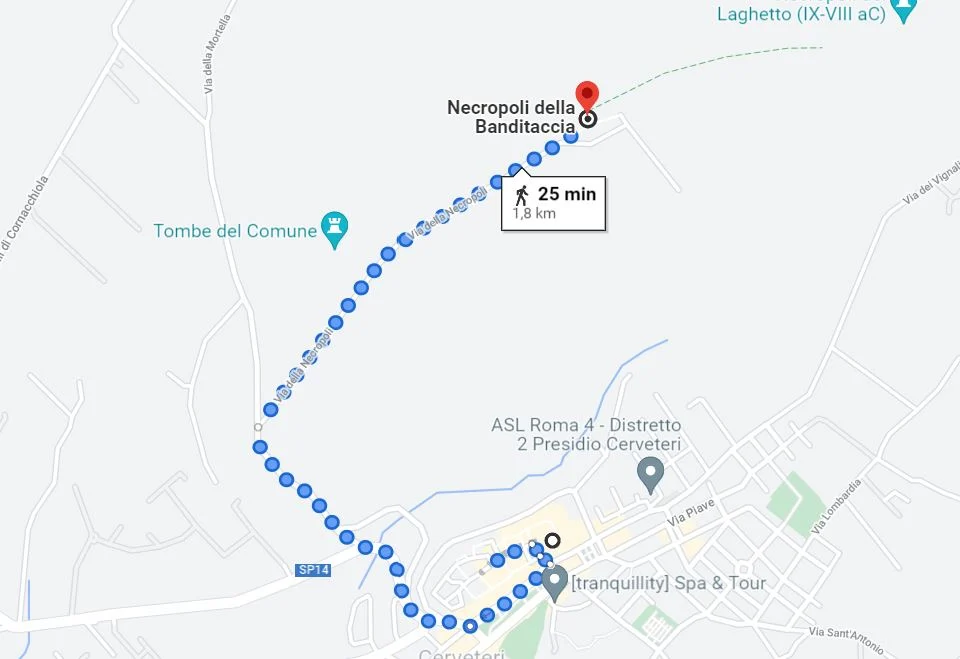
BONUS…
In addition to history and culture, Cerveteri and its surroundings offer us countless natural beauties. How about getting to know some of them?
Torre Flavia
Torre Flavia is a marshy area of great importance for the protection of migratory birds and for the conservation of the last stretch of ancient Lazio Maremma. The territory of this natural monument extends along the coast, between Cerveteri and Ladispoli and, in some parts, they are separated from the sea by a narrow strip of sand.
Castel Giuliano Waterfalls
For those who enjoy hiking and contact with nature, an obligatory stop is on the path that connects Cerveteri to the various waterfalls in the region to reach the waterfalls of Castel Giuliano. The area is beautiful, very quiet and offers us a suggestive itinerary indeed, considering the exuberant nature and the large amount of streams present in the area. Another beautiful and little-known part of the region are the Cerveteri Waterfalls. They are located along another stream, and there you find small bathing lakes, in a narrower valley compared to that of Castel Giuliano. The falls are not so high, but they offer a very beautiful panorama!
The city’s history is one of the oldest in all of Italy
According to studies by historians, Cerveteri appears in historical records in 540 BC, in the Battle of the Sea of Sardinia. It is said, however, that the city appeared as a discovery in the ninth century BC. An archaeological investigation found, in fact, that from this period onwards there was already a stable occupation in the place. There were residential settlements and necropolises in effect on the northwest and southeast edges of the tufaceous plateau, right between the ditches of Manganello, to the north, and Mola, to the south; it was here that the Etruscan city developed on the plateau in historic times.
The Pelasgians
According to studies, the city would have been founded by the Pelasgians, a mythical population of Greek origin, and named Kaisra (Agylla for the Greeks and Caere for the Romans). The city would have emerged soon after the evolution of the small protohistoric settlements of Villanovan and thanks to the constant contact with the Greek culture, which made the trade a great growth through the Phoenicians. This would have occurred around the 8th century BC. Everything also contributed to the social growth of the city, which followed a hierarchical and organized structure, headed by aristocratic families. This is documented throughout the extent of the burial areas on the Banditaccia and Monte Abatone plateaus.
Cerveteri’s heyday
Cerveteri’s heyday took place during the 6th century. When the mercantile economy thrived, so did the population and the urban center; the consequence of this was also cultural growth and increased movement in the port of Pyrgi – where today is Santa Severa – and its sanctuaries. However, as life is not a bed of roses, from the 70s of the 5th century BC onwards, the crisis hit the city, especially because of the problems with the Greeks. As time passed, the crisis increased and, thus, the city was forced to tighten its ties with Rome, to the point of receiving the vestals of the empire in 390 BC during an invasion of the Gauls. Soon afterwards, in the first decades of the third century, involvement in the war between Tarquinia and Rome led Cerveteri to succumb and, in 273 BC, the city became fully Roman.
The Medieval Period
During the medieval period, Cerveteri faced persistent challenges, including oppressive regimes and retaliatory actions linked to events involving Rome, such as the Saracen invasion. This led to a decline in the area, exacerbated by a malaria epidemic in the 12th century, prompting inhabitants to abandon the old city and relocate to Ceri. Cerveteri’s revival occurred in the 1500s when it became part of the Ruspoli family principality, with the acquisition of Orsini Castle in 1674 marking a significant moment in its history.
Watch this video and learn: 5 Things to never do in Italy!
Subscribe to our channel and receive more video tips about Italy. Don’t forget to give this video a thumbs-up! 😉
Conclusion
A day trip from Rome: Cerveteri, a unique beauty in Lazio. Cerveteri is the ideal destination for lovers of Etruscan history, nature and a city that, over the centuries, has established itself as one of the most incredible cities in all of Italy.
Do you feel unsafe traveling?
If you need help organizing your trip, do not hesitate to contact me! I would love to help you make your dream trip to Italy.
Still in doubt? Be sure to post your questions below, or just send me a message and I will answer you as soon as possible!
An Extra Help for your Trip
The best content from Your Travel to Italy!
Learn more about our tours in Italy right now!
- What to visit in Italy in 10 days?
- The ten must-see places in Tuscany?
- The best tips to save on your trip to Italy?
- What are the 10 most visited cities in southern Italy?
- Airports in Italy? How to get to your hotel? (Venice, Milan, Rome, Florence)
- What to do in 1/2/3/4 days in the main Italian cities?
- The best tips on food in Italy (wines, typical food, enogastronomy tours)
- How to get from Fiumicino Airport to Rome downtown?
- Your Travel to Italy: 10 tips for traveling through Italy!
Best regards from Italy
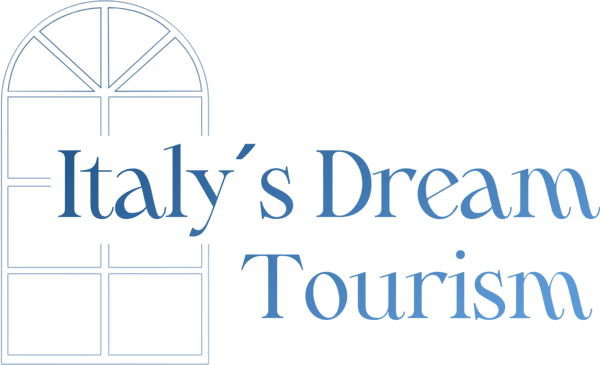
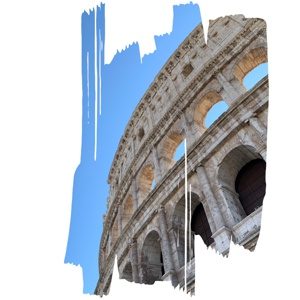 PLACES TO STAY IN ROME
PLACES TO STAY IN ROME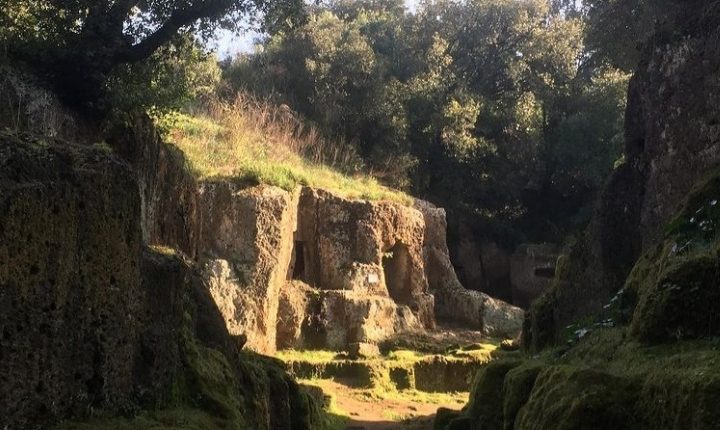
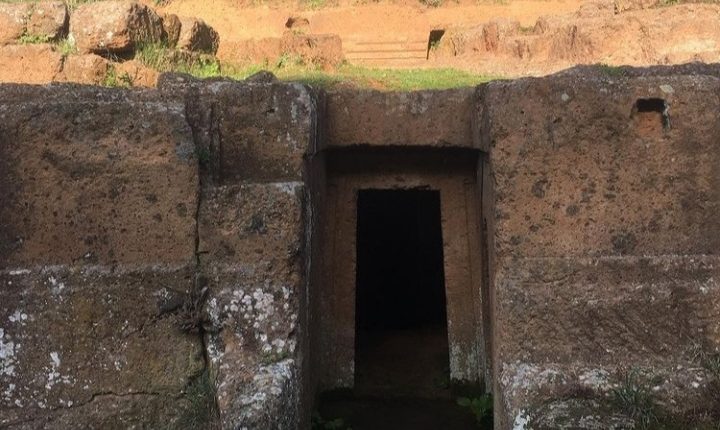
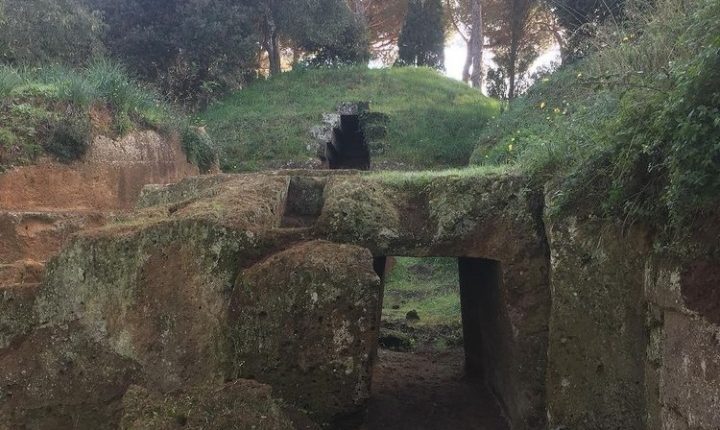






 Save money!
Save money!